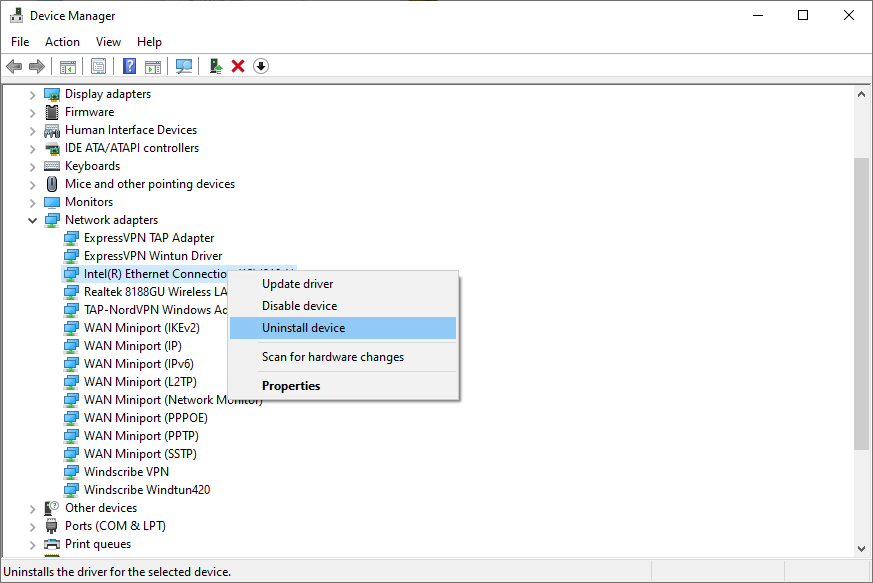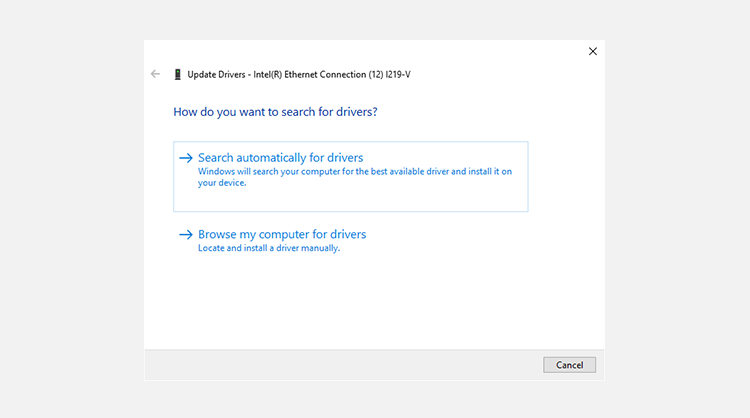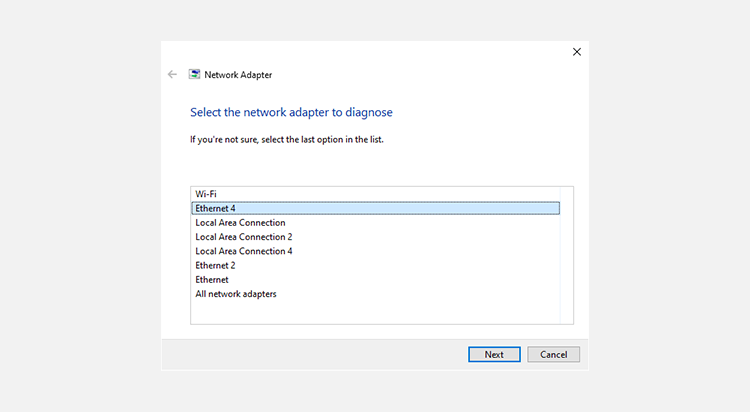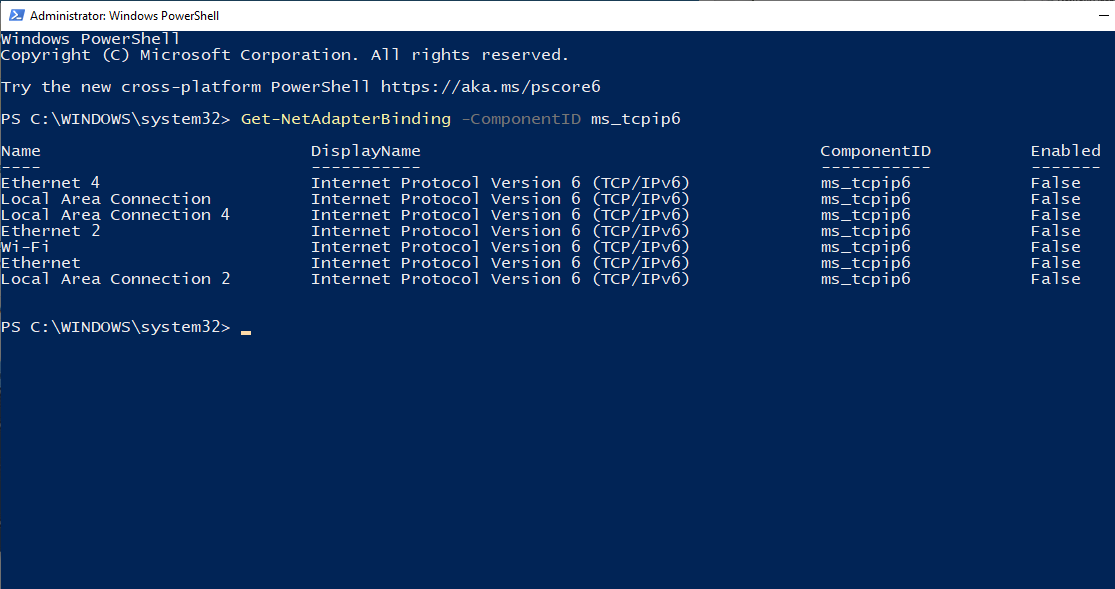You're sipping on your Chai tea on a Sunday ready to skim through memes about Kim's black Met Gala dress, but you notice your internet isn't working. You go to check your connection and an error window pops up that says "An unexpected error occurred."
It can be incredibly infuriating to receive an error while trying to solve an error, especially one that's so vague. Fortunately, you can use this guide to navigate the unexpected error and get back online.
What Causes "An Unexpected Error Occurred" Ethernet Problem in Windows?
The most common causes for ""An Unexpected Error Occurred" when opening the Ethernet settings are due to a Windows build update or a change in the network adapter's configuration. A Windows build update can introduce some problems for your network drivers which can keep your system from connecting to the internet. If the problem is because you changed the network adapter's configuration, though, it's fairly easy to reset.
How to Fix the "An Unexpected Error Occurred" Problem in Windows
Whatever the problem is, one of the following fixes should be able to get you back online as well as help you regain access to the ethernet Properties so you don't encounter the "An unexpected error occurred" error.
1. Reinstall the Ethernet Driver
If your driver's configuration is jacked up, you can just uninstall and reinstall the driver so everything returns back to its defaults. This will likely address the "An unexpected error occurred" error.
Press Win + R and type in devmgmt.msc to launch the Device Manager. Expand the list of Network adapters and search for your ethernet adapter. In most cases, it will have the word ethernet in its name. Right-click on the driver and select Uninstall device.

Select Uninstall when prompted for confirmation.
Once your device disappears from the list, click on Action from the top ribbon and select Scan for hardware changes. Windows will reinstall the device when it scans. You could also just restart your PC, and the driver will reinstall automatically.
Revisit the Network Connections window and see if you can access the Ethernet adapter's properties now. If you can't but your Device Manager window is open, don't close it just yet.
2. Update the Ethernet Driver
While you're at it, try updating the driver as well. Even without the issue, it's good practice to keep your drivers updated. If your driver has a compatibility issue with Windows, an update may be able to fix it.
Right-click on the ethernet adapter and select Update driver. The update wizard will ask if you want Windows to search for a driver automatically or browse your computer for driver files.

Windows isn't all that great at automatically finding an updated driver, so you may just go to the manufacturer's website and download the drivers for manual installation. Usually, searching for "XYZ driver download" or something similar will take you to the download page.
If you've decided to give the automatic option a shot, select Search automatically for drivers and see if Windows finds the driver. If it does, the wizard will walk you through the installation process.
Select Browse automatically for drivers if you want to go the manual route or the automatic option didn't find the driver. In the next step, navigate to the folder where you've stored the driver installation files. Continue with the wizard and let it finish the installation.
When you're done, restart the PC to see if the "An unexpected error occurred" error is gone for good.
3. Use the Built-in Troubleshooter
Windows has a fleet of troubleshooters that can help you solve a lot of problems with a single click. If the previous methods didn't work for you, it's time to call upon one of these troubleshooters to see if they can help you out.
Press Win + I to launch the Settings app. Navigate to Update & Security > Troubleshoot. Select Additional troubleshooters from the right pane and this will take you to a list of troubleshooters. Look for the Network Adapter troubleshooter, click on it, and select Run the troubleshooter.
Once you launch the troubleshooter, you'll need to select the adapter you want to troubleshoot.

Click Next once you've chosen and let the troubleshooter detect the problems. if it finds an issue, it will try to fix it automatically. If it can't be fixed automatically, you'll at least find out what the issue is.
However, if it can't detect problems at all, try the next fix.
4. Disable IPv6
The conventional route for disabling IPv6 may not be an option here since you're unable to access the network adapter's properties. Fortunately, Windows has an alternative that you can use to manipulate the configuration of various system components.
PowerShell allows you to configure your network adapter through cmdlets. You can use PowerShell to disable the IPv6 for a particular network adapter without having to open the network adapter's properties.
Press Win + R, type powershell, and press Ctrl + Shift + Enter to launch an elevated command prompt. Execute the following command to verify that IPv6 is actually enabled for a specific network adapter:
Get-NetAdapterBinding -ComponentID ms_tcpip6
When you check if IPv6 is enabled, also note the exact name of the adapter as it appears on this list for which you want to disable IPv6.
To disable IPv6, execute the following command:
Disable-NetAdapterBinding -Name "Adapter Name" -ComponentID ms_tcpip6Of course, switch the "Adapter Name" for the actual name that you just noted for the adapter.
When you're done, exit the PowerShell and reboot the PC to see if you still encounter the "An unexpected error occurred" when you open Ethernet properties.
Punching the Unexpected Error Flat
It's difficult to control your network without being able to access the network adapter's properties. Hopefully, one of these fixes worked for you and you're now able to reconfigure your adapter properties like normal.
If you were trying to access the Ethernet network properties because you're having problems with your home network, there are ways to fix an iffy network and get back online once more.
0 Comments